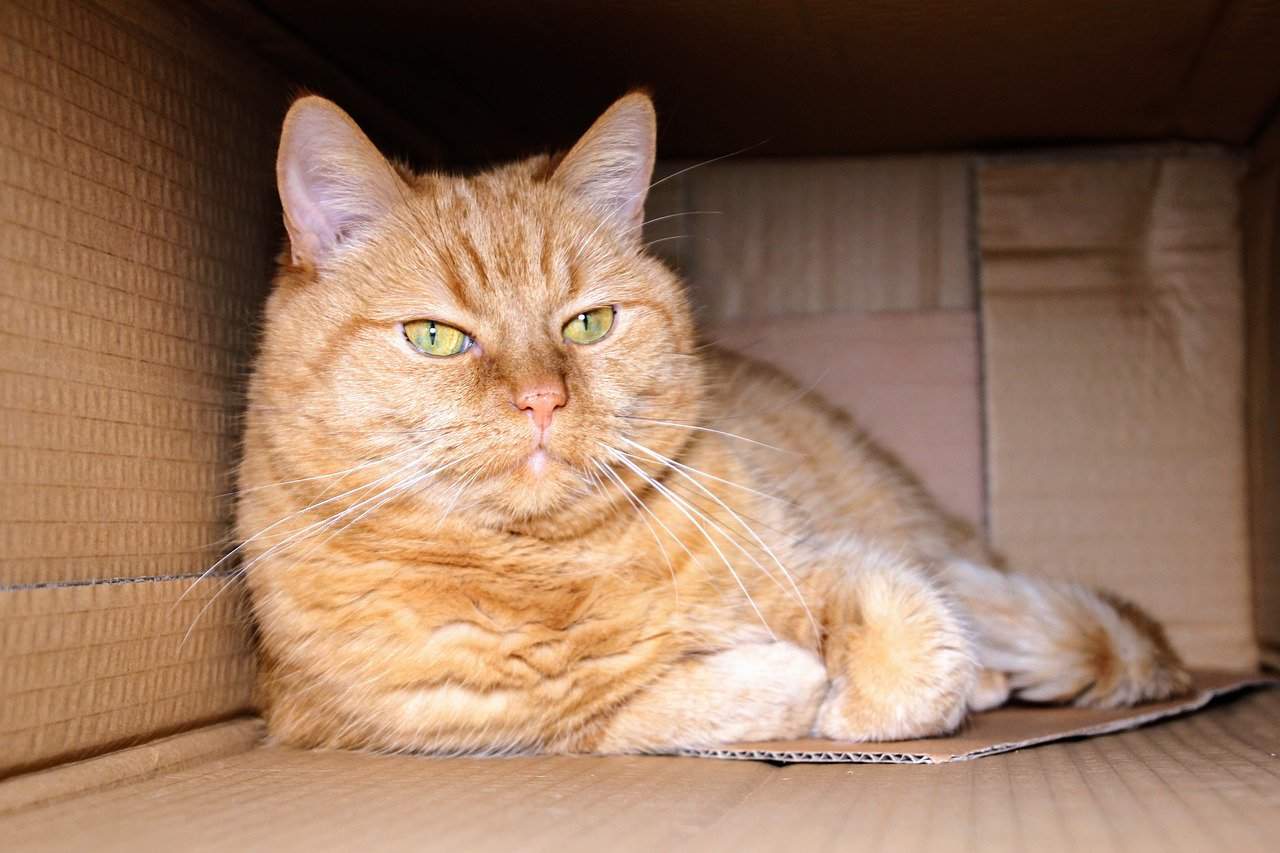Whether you’re moving across town or across the country, the transition is going to be a big deal for your cat. As much as we love our feline friends, that’s how much they hate change. Leaving them behind is obviously not an option, so when the time comes to move houses, you need to think about how the change will affect your cat. If you’re not careful, they could become dangerously stressed, or they could even dash out an open door and get lost at the worst possible time.
Before you switch out your house keys, consider these tips on how to make a move easier on your cat.
1. Break out the carrier far in advance.
The safest place for your cat on moving day will be their carrier—whether they like it or not. If you know your cat isn’t a big fan of being locked inside, you’ll do both of you a favor by bringing the carrier out weeks before the big move. The more time your cat has to get used to that enclosed space, the better.
Don’t force your cat inside, but leave the door open and lure them in with treats. Let them know that the carrier is a safe place. When it’s moving day, you don’t want the carrier to contribute to the stress, you want it to help your cat feel secure.
2. Update your cat’s microchip and ID tag.
There are too many stories of cats getting lost right when their families are getting ready to move. It’s like they can sense something happening, and that stress can cause them to slip out an open door or push their way through a window screen.
You need to be prepared for that emergency by making sure their microchip and ID tag are updated. You want your new address and current phone number connected to your cat at all times, just in case.
3. Pack your cat’s stuff last.
If you’re lucky, your cat will be more interested in the cardboard boxes you bring into the house than what’s actually happening around them. They might even have fun while you’re busy packing. But as you go through and pack each room, try to leave your cat’s toys and beds for last.
The longer you can keep things normal for your cat, the less stressed they will be. If they start noticing that all their favorite stuff is disappearing, they might show their displeasure in inconvenient ways—like through constant yowling or inappropriate toileting when you’re trying to clean.
4. Put your cat in a safe room on moving day.
When the big day arrives, the last thing you want is your cat tripping your movers, getting lost behind piles of boxes, or running out the open door. Make the move easier on your cat by putting them in a room that you’ve already cleared out, like the spare bathroom.
Put their carrier in there, their litter box, a toy or two, their comfy bed, and some water. Keep the door closed and put a note on the outside telling your movers that the room is off limits.
5. Keep your cat in their carrier while in the car.
Even if your cat protests about being in their carrier, it really is the safest place for them to be. It doesn’t matter whether the trip to your new house is only a couple minutes or more like a few hours, it’s best to keep your cat in their carrier.
You can’t predict what your cat will do during this stressful transition. And you really don’t want to be climbing over the seats in your car to secure your cat once you reach your destination.
6. Set up another safe room in your new house.
When you get to your new house, do exactly what you did at your old house. Set up your cat with all their necessities in a safe room that you can easily close off. Let them get used to that new environment while you prepare the rest of the house.
You can make the move easier on your cat by introducing them to their new digs one step at a time. Immediately letting them loose into a new house with a mountain of unpacked boxes will be scary and stressful.
7. Give the new house a deep clean.
The house might smell clean to you, but remember that your cat’s sense of smell is much stronger. If the previous family had pets of their own, there’s a good chance their smell is still there. Your cat will pick up on that scent right away.
It could cause your normally well-behaved feline to start marking their new territory. They could also be on edge waiting for the owner of the strange scent to show up at any second.
8. Don’t wash your bedding.
While new scents have potential to stress out your cat, familiar scents will make them feel more at home. Resist the urge to wash your sheets and blankets right before the move. Instead, bring those familiar scents into your new home where they will comfort your cat.
You’ll need to wash them eventually, but the power of a comforting scent will be a big help during the first few days in your new house.
9. Follow your cat’s lead.
If you’ve known your cat for more than a few months, you probably have a good idea of their stress level. Are they the type that gets stressed easily? Or are they generally easy-going and unflappable? When you get to your new house, you should make the move easier on your cat by letting them decide how much change they can take at once.
If they’re showing signs of stress including hiding, aggression, or diarrhea, that’s your signal to take it slow. Introduce them to new rooms one at a time, and only after you’ve arranged the furniture and unpacked the boxes.







